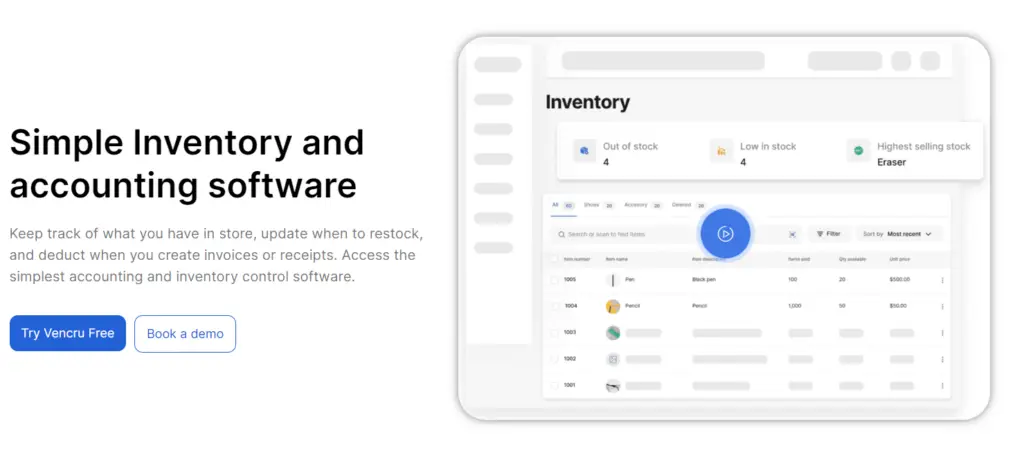Effective inventory management is essential for maintaining smooth business operations. One critical metric in this area is average inventory. Understanding what average inventory is and how to calculate it can provide valuable insights into your inventory levels, help optimize stock management, and improve financial performance. In this blog, we’ll be discussing:
- What is Average Inventory?
- How to Calculate Average Inventory
- Why is it Important to Know Average Inventory?
- The Limitations of Average Inventory
- What is the Inventory Turnover Ratio
What Is Average Inventory?

Average inventory represents the mean value of inventory held by a business over a specific period. It offers a comprehensive snapshot of inventory levels, helping to smooth out fluctuations that might arise from seasonal variations, market trends, or other influencing factors.
By averaging inventory levels over a set time frame, businesses can better understand their typical stock quantities, mitigating the impact of peak seasons or unexpected demand spikes. This smoothed view is crucial for assessing overall inventory health, as it provides a more stable metric compared to simply looking at inventory levels at any single point in time.
How To Calculate Average Inventory
To calculate average inventory, you need to follow these simple steps:
- Determine Beginning Inventory: Identify the value of inventory at the start of the period you’re analyzing. This information comes from your accounting records or inventory management system.
- Calculate Ending Inventory: Determine the value of inventory at the end of the period. Use the formula:
Ending Inventory = Beginning Inventory + Purchases - Cost of Goods Sold (COGS) - Use the Average Inventory Formula: Calculate the average inventory by using this formula:
Average Inventory = (Beginning Inventory + Ending Inventory) / 2.
For example, if your beginning inventory is $10,000 and ending inventory is $12,000, the average inventory is(10,000 + 12,000) / 2 = $11,000. - Consider Periodic Reviews: Businesses may need to calculate average inventory for different time intervals, such as monthly or quarterly, to get a more detailed view of inventory trends.
Why Is It Important To Know Average Inventory?

Understanding average inventory is crucial for several reasons:
- Inventory Management: Knowing your average inventory helps in managing stock levels more effectively. It ensures that you are not overstocking or understocking, which can impact sales and profitability.
- Financial Analysis: Average inventory is used in various financial ratios, such as inventory turnover ratio, which helps assess how efficiently inventory is being managed. This insight is valuable for improving financial performance and operational efficiency.
- Cash Flow Management: Properly managing average inventory can have a significant impact on cash flow. By maintaining optimal inventory levels, businesses can reduce holding costs and free up cash for other uses.
- Demand Forecasting: Average inventory helps in predicting future inventory needs based on historical data, leading to better demand forecasting and purchasing decisions.
The Limitations Of Average Inventory
While average inventory provides useful insights, it also has limitations:
- Does Not Reflect Variability: Average inventory smooths out fluctuations but may not reflect the variability in inventory levels throughout the period. This can be a limitation if inventory levels vary significantly.
- Static Measurement: It provides a snapshot over a specific period but may not account for seasonal trends or market changes that affect inventory levels.
- Potential Misleading Data: In businesses with high inventory turnover or seasonal products, average inventory might not accurately represent the optimal inventory levels needed at different times.
What Is The Inventory Turnover Ratio?

The inventory turnover ratio measures how efficiently a business manages its inventory. It shows how many times inventory is sold and replaced over a period. The formula for calculating the inventory turnover ratio is: Inventory Turnover Ratio = Cost of Goods Sold (COGS)/Average Inventory
For example, if your cost of goods sold is $100,000 and your average inventory is $20,000, the calculation would be: Inventory Turnover Ratio = 100,000/20,000 = 5
This means your inventory turned over five times during the period. A higher turnover ratio indicates efficient inventory management, while a lower ratio may suggest overstocking or slow-moving inventory.
Streamline Your Inventory Management with Vencru

For businesses seeking to enhance their inventory management, Vencru offers a powerful solution tailored to your needs. Our cutting-edge accounting and inventory management tools make it easy to calculate and manage average inventory, optimize stock levels, and elevate your overall operational efficiency. See how Vencru can transform your inventory processes and drive success.
Conclusion
Understanding average inventory is fundamental for effective inventory management and financial analysis. By calculating average inventory, businesses gain valuable insights into their typical stock levels, which helps in optimizing inventory management, improving cash flow, and enhancing demand forecasting. While it has limitations, average inventory remains a crucial metric for assessing inventory performance and making informed business decisions.
Implementing effective inventory management practices, along with using tools and strategies to calculate and analyze average inventory, can significantly contribute to your business’s overall success and operational efficiency.
Related Content






